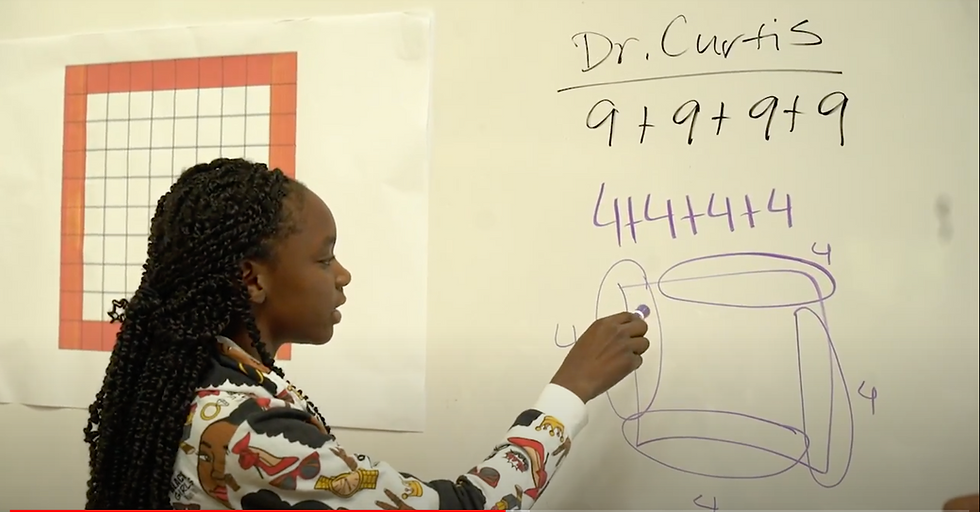MAIC Discourse the Main Course Pt.4
- Yay Math!
- Feb 14, 2019
- 3 min read
Updated: Apr 22, 2019
Ready for dessert? Let's explore some sticky situations.
While there are all sorts of sticky situations you might encounter when trying to facilitate mathematical discussions, we want to highlight two in particular:
When you realize that your students don't understand the mathematical ideas in your warm-up
When students think that math is about 'remembering' how to do something they 'learned' previously, instead of exploring the how and why of a particular mathematical concept
So what do you do in these situations? When you realize that students do not have the foundational understanding to engage in the problem you were planning that day? Or when students echo some "rule" they've learned in the past (or that they think that you've taught when you haven't) but clearly they have no understanding of the underlying mathematics for the rule – no idea where it comes from or how it works?
In the video below, Gavin, a High Tech High Chula Vista teacher, beautifully navigates both of these sticky situations with his class.

Some background: the class begins with an opener of students first recording their personalized goal and then finding a value of the question mark that would make the statement on the slide in the picture true.
While the whole video is a great, we suggest watching from 16:13 until the end. The segment begins with Gavin asking the class to consider an idea proposed by Diego.....
While this video cuts off it should be noted that in the follow up video the students continue to grapple and eventually come to a consensus.
Let's unpack some of the moves Gavin made as he navigated these sticky situations. What did he do to 'unstick' his students from believing "we HAVE TO follow some rule," and move them towards engaging in the mathematical practices of constructing viable arguments and critiquing the reasoning of others? Where did he push his students to explore "why does this make sense?"
At 19:38 Gavin says to the class "We are in a predicament right now is it_____ or ____?" He then allows Bella to try to convince the class of why she thinks the bases should be multiplied.
At 24:44 Gavin recaps both arguments for his students to consider while maintaining a neutral tone.
Why these moves are awesome: Gavin has an epic pokerface. His neutral stance allows all ideas to be considered by the class. It is also clear from the class responses that students do not have a firm grasp on the nature of exponents.
Throughout the video Gavin repeatedly ask his class "Do you guys agree/disagree" AND he pushes for students to explain "why".
While the debate could have continued endlessly (another sticky situation!) Gavin pulled a Jedi master move. Instead of stepping in and telling students the rule, (which is likely what occurred in the past – and both why students didn't have a firm grasp of the concept and why they were so intent on 'remembering' instead of making sense of the options), he planted a little seed in way that might help students come to a resolution. This moment happen right at 25:25 when Gavin suggests that they should multiply out the 2 by itself 10 times. Note how moments later a student suggests that they compare the two calculated values: "Okay, let's see what 4 to the tenth power is."
Why these moves matter: When students are pressed to justify their thinking and critique the reasoning of others, they begin to see mathematics as something they can make sense of, and not as a recipe to follow. By encouraging students to engage in the mathematical practices we begin to liberate students from the "you have to...." and create problem solvers who can explain "this makes sense because..." and that's pretty sweet!
Treat yourself to watching Dr.Cheng and Colbert explore the exponential* magic of puff pastry!
*Speaking of exponents, YouCubed recently published a new task, "Exploring Exponents" that focuses on students recognizing patterns and generalizing their observations rather than memorizing rules of exponents. We especially appreciate the visual component.

And thanks to Desmos you and your students can create your very own Math-o-gramand spread the love & joy of mathematics!
YayMath!



Appreciate you bllogging this